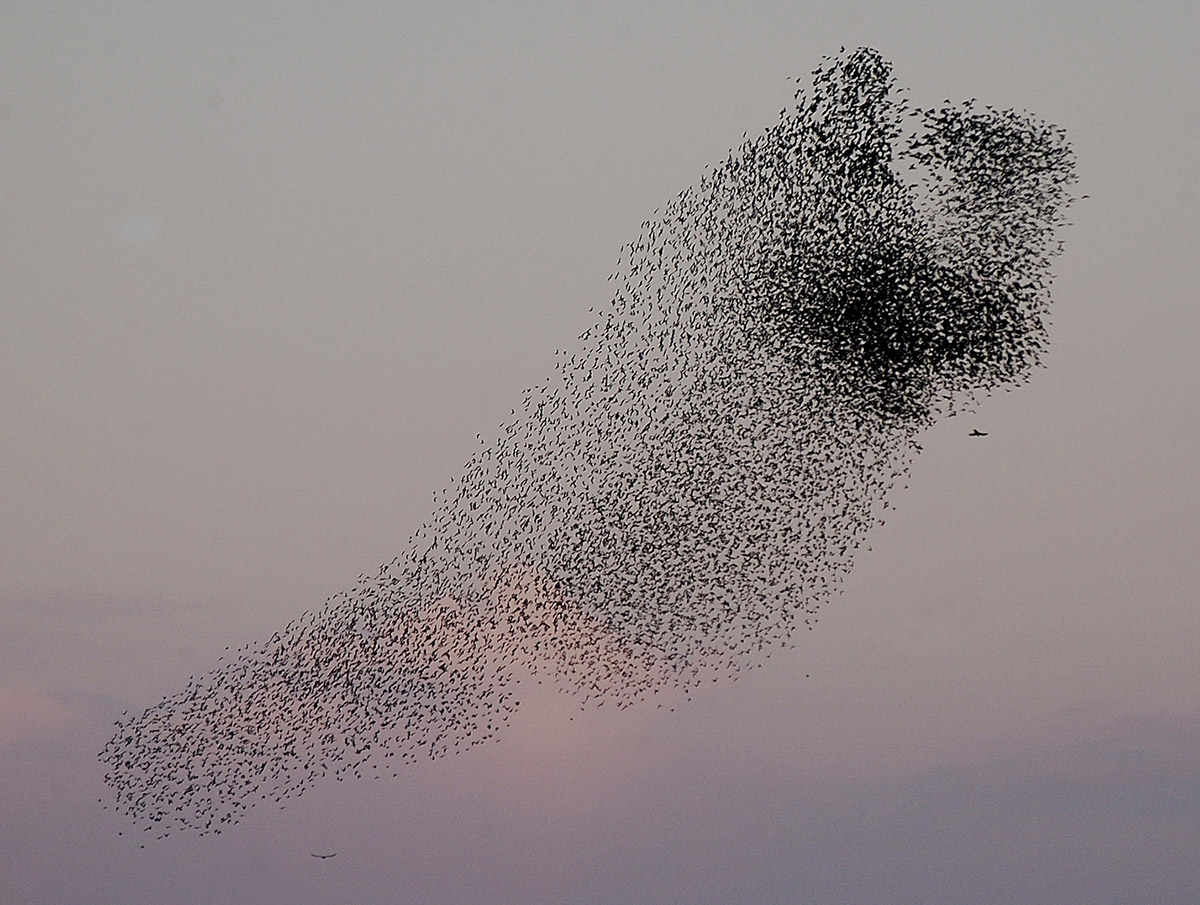
003 Swarm of birds
Everyone has once been amazed to see how birds are flocking in the air. Much has been said about the simpe rules the birds are executing when flocking. The birds are constantly aware of their neighbours, avoid collision, keeping agreed distance, adapting to the neighbours direction, striving at a more central position in the flock. Their flocking behaviour has been modelled in simple computer graphics, back in 1986 Craig Reynolds [red3d.com]made a computer model of animal motion, scripting the rules for the creatures he named boids, based on three dimensional computational geometry. Why then are we interested in boids and swarms of birds. Why did I introduce the term swarm architecture back in 2001 during the first Game Set and Match Conference I organised at the TU Delft [hyperbody.nl]? My objective has been clear from the beginning: I wished then and still wish now to identify all possible building components as interacting elements building up bi-directional relations with each other. The idea of behaviour intrigued me because it would lay the foundations for an archtecture that is not static but animated in real time. Animated not as was described by Greg Lynn in his book Animated Form [1998], who de facto claimed his license to kill the animation, but animated in its purest meaning, keeping the structure informed, much like the flock of birds. I concluded that there is no meaning in freezing the motion, I realized we needed to use actual ICT technology to sustain the information flow throughout the complete life-cycle of the built structure.
